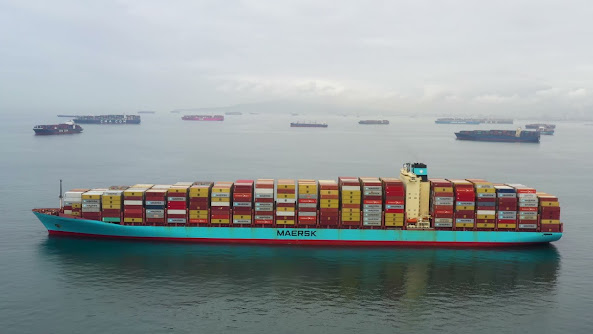Soon, a vast, decrepit oil tanker in the Red Sea will likely sink, catch fire, or explode. The vessel, the F.S.O. Safer—pronounced “Saffer”—is named for a patch of desert near the city of Marib, in central Yemen, where the country’s first reserves of crude oil were discovered. In 1987, the Safer was redesigned as a floating storage-and-off-loading facility, or F.S.O., becoming the terminus of a pipeline that began at the Marib oil fields and proceeded westward, across mountains and five miles of seafloor. The ship has been moored there ever since, and recently it has degraded to the verge of collapse. More than a million barrels of oil are currently stored in its tanks. The Exxon Valdez spilled about a quarter of that volume when it ran aground in Alaska, in 1989.
The Safer’s problems are manifold and intertwined. It is forty-five years old—ancient for an oil tanker. Its age would not matter so much were it being maintained properly, but it is not. In 2014, members of one of Yemen’s powerful clans, the Houthis, launched a successful coup, presaging a brutal conflict that continues to this day. Before the war, the Yemeni state-run firm that owns the ship—the Safer Exploration & Production Operations Company, or sepoc—spent some twenty million dollars a year taking care of the vessel. Now the company can afford to make only the most rudimentary emergency repairs. More than fifty people worked on the Safer before the war; seven remain. This skeleton crew, which operates with scant provisions and no air-conditioning or ventilation below deck—interior temperatures on the ship frequently surpass a hundred and twenty degrees—is monitored by soldiers from the Houthi militia, which now occupies the territory where the Safer is situated. The Houthi leadership has obstructed efforts by foreign entities to inspect the ship or to siphon its oil. The risk of a disaster increases every day…
Better yet, read the New Yorker article. It's worth the price of a subscription by itself.
"I'm optimistic about…a pair of very big numbers. The first is 4.5 x 10ˆ20. That is the current world annual energy use, measured in joules. It is a truly huge number and not usually a cause for optimism as 70 per cent of that energy comes from burning fossil fuels.
Thankfully, the second number is even bigger: 3,000,000 x 10ˆ20 joules. That is the amount of clean, green energy that pours down on the Earth totally free of charge every year. The Sun is providing 7,000 times as much energy as we are using, which leaves plenty for developing China, India and everyone else. How can we not be optimistic? We don't have a long-term energy problem. Our only worries are whether we can find smart ways to use that sunlight efficiently and whether we can move quickly enough from the energy systems we are entrenched in now to the ones we should be using. Given the perils of climate change and dependence on foreign energy, the motivation is there..."
Decrementing the "7,000" to "6,000" to roughly account for subsequent worldwide energy consumption growth, one would also need to "net out" by accounting for the estimate that ~30% of the solar energy is radiated (reflected) right back out into space. So, what if we round down to "4,000x?" Capturing and converting 1/4000th of that (0.0025, or 0.025%) would get us to ~100% "solar"energy.
As directed by President Biden's January 28, 2021 Executive Order 14008, major Federal agencies are required to develop an adaptation and resilience plan to address their most significant climate risks and vulnerabilities. On October 7, 2021, the White House announced the release of more than 20 Federal Agency Climate Adaptation and Resilience Plans. As part of these efforts, agencies will embed adaptation and resilience planning and implementation throughout their operations and programs and will continually update their adaptation plans.
"Trump rarely talked about U.S. policy, and never really bothered to read the briefing materials that laid out the policy points in the first instance. He would refer to things happening on “my watch,” offer his views on topics, which were often based on a conversation he had had with a personal friend (which he would actually say directly), or repeat something he had heard on Fox News. Whenever he could, Trump would turn the discussion around to some of his pet peeves to get them off his chest—windmills and the advent of wind power was one that always came up. The president was not a fan of most renewable energy projects, except for hydropower. He would go on at length about how huge wind turbines marred the view and reduced property values or decimated migratory birds.
During the July 2019 state visit, the Brits had wanted to talk about climate change. They tried to put the issue on the formal agenda for the meeting at Number 10. The president refused. It was not an issue he wanted to talk about after pulling out of the Paris Climate Agreement. He hated Europeans’ trying to raise it again and put him on the spot. So the Brits deputized Queen Elizabeth’s eldest son and heir, Prince Charles, to discuss the subject at the U.S. ambassador’s dinner. That way Trump had to at least listen to the prince’s points, even though he was not enthused (and said so to the press after the dinner). Trump’s favorite topics were golf or other sporting events and related analogies, and his personal or family’s business success…"
Our climate is changing at an extraordinary rate. While this is plainly visible in our glacier landscapes, aerial and digital technologies are needed to see the full extent of changes across larger scales and timeframes."SOFT CLIMATE DENIAL"
This project explores the creative application of these technologies to better communicate the science behind our changing climate.










No comments:
Post a Comment